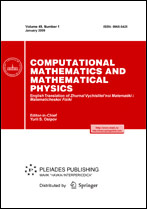|
This article is cited in 17 scientific papers (total in 17 papers)
Mathematical physics
Mathematical modeling of the Wuhan COVID-2019 epidemic and inverse problems
S. I. Kabanikhinab, O. I. Krivorot'koab
a Institute of Computational Mathematics and Mathematical Geophysics, Siberian Branch, Russian Academy of Sciences, Novosibirsk, 630090 Russia
b Novosibirsk State University, Novosibirsk, 630090 Russia
Abstract:
Mathematical models for transmission dynamics of the novel COVID-2019 coronavirus, an outbreak of which began in December, 2019, in Wuhan are considered. To control the epidemiological situation, it is necessary to develop corresponding mathematical models. Mathematical models of COVID-2019 spread described by systems of nonlinear ordinary differential equations (ODEs) are overviewed. Some of the coefficients and initial data for the ODE systems are unknown or their averaged values are specified. The problem of identifying model parameters is reduced to the minimization of a quadratic objective functional. Since the ODEs are nonlinear, the solution of the inverse epidemiology problems can be nonunique, so approaches for analyzing the identifiability of inverse problems are described. These approaches make it possible to establish which of the unknown parameters (or their combinations) can be uniquely and stably recovered from available additional information. For the minimization problem, methods are presented based on a combination of global techniques (covering methods, nature-like algorithms, multilevel gradient methods) and local techniques (gradient methods and the Nelder–Mead method).
Key words:
mathematical models, COVID-2019, coronavirus, epidemiology, inverse problems, optimization, regularization, identifiability, ODE, tensor decomposition, nature-like algorithms, gradient methods.
Received: 02.03.2020
Revised: 02.03.2020
Accepted: 07.07.2020
Citation:
S. I. Kabanikhin, O. I. Krivorot'ko, “Mathematical modeling of the Wuhan COVID-2019 epidemic and inverse problems”, Zh. Vychisl. Mat. Mat. Fiz., 60:11 (2020), 1950–1961; Comput. Math. Math. Phys., 60:11 (2020), 1889–1899
Linking options:
https://www.mathnet.ru/eng/zvmmf11163 https://www.mathnet.ru/eng/zvmmf/v60/i11/p1950
|


| Statistics & downloads: |
| Abstract page: | 200 | | References: | 31 |
|





 Contact us:
Contact us: Terms of Use
Terms of Use
 Registration to the website
Registration to the website Logotypes
Logotypes








 Citation in format
Citation in format 
